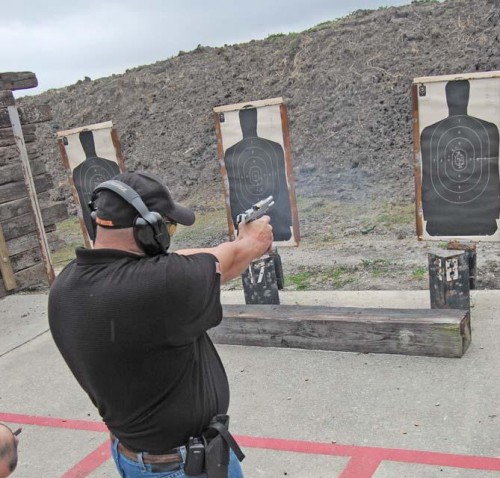Tuesday, Mar. 9
March 9, 2010
Sheriff’s ranges give public a new target
March 11, 2010For those who like to cruise in the fast lane, the mystery of where and when traffic exists in Terrebonne Parish is over.
That’s because Parish President Michael Claudet announced the Department of Transportation and Development has installed cameras that will provide real-time traffic images of Terrebonne’s high-traffic roadways on the parish Web site, www.tpcg.org.
“I feel the information provided by the Department of Transportation and Development 511.com Web site is very user friendly and helpful,” Claudet said. “It is a great resource that the residents of Terrebonne Parish can use in the future.”
The link to the 511.com traffic site can be found on the bottom left of the parish’s home page.
Users can watch live traffic video from 14 cameras positioned at major traffic areas as well as access maps that display areas of traffic congestion, road closures and road construction areas.
Traffic cameras are located in the following areas:
• La. Highway 24 at Intracoastal Waterway Bridge
• La. Highway 24 at La. Highway 3087, south of La. Highway 24
• La. Highway 57 at La. Highway 661, north of La. Highway 57
• La. Highway 659 at La. Highway 3087
• U.S. Highway 90 at La. Highway 24
• La. Highway 24 at N. Hollywood Road
• La. Highway 24 at La. Highway 182
• La. Highway 3040 at La. Highway 24
• La. Highway 182 at N. Hollywood Road
• La. Highway 182 at La. Highway 3197
• La. Highway 182 at La. Highway 3040
• La. Highway 3040 at St. Charles Avenue
• La. Highway 311 at S. Hollywood Road
• La. Highway 3040 at S. Hollywood Road
Terrebonne Parish public safety director Ralph Mitchell said the traffic cameras can help save lives as well.
“If there’s a crash at an intersection, while the emergency personnel are responding to it, we can get a look before even a first responder gets there and get some conditions of what’s going on,” said Mitchell. “We could see if there would be the need for ambulances, fire trucks or hazard material responders, so it just gives a lot of flexibility that we didn’t have in the past.”
But Mitchell said the benefits of these cameras won’t stop there. In the near future, the parish will be able to monitor the traffic cameras and automatically change traffic light cycles.
“The beauty of the new intelligent traffic signals is to be able to very easily and almost instantaneously adjust the timing on an intersection,” the safety director explained. “So by monitoring the traffic, you can certainly adjust the timing to get more flow to the areas that need it the most.”
For now, the traffic light cycles still need to be changed in person, but Terrebonne Parish has implemented a plan to install fiber optics lines that will allow them to adjust the timing of traffic lights in high-traffic intersections without even leaving the office.
“Ultimately, this will all tie in to the much bigger project, and that’s reliable traffic monitoring, instant management of the whole region,” said Mitchell. “We’ll be able to monitor intersections, see where problems are, and relay that info back to the motorists through those variable message signs.
“That especially becomes important during evacuations and things of that nature,” he added.
Mitchell noted this new technology will be a big improvement over the old system that the parish used to implement for traffic signals. In the past, the light cycles had a predetermined length and needed a worker to go to the intersection and change the timing on the signals.
“And they were usually set up for the worst case scenarios, so if you had an early morning or a late afternoon rush, they were set up to accommodate that,” he said. “But then you had to live with that for the rest of the time and on weekends.”
Now, the parish can set different predetermined light cycles at different times during the day.
“It’s kind of like programming a thermostat at your house; you adjust it to the situation that’s going on out there,” said Mitchell. “You give more time during the morning rush and the evening rush, then you level it out during different times of the day and on weekends and holidays.”









